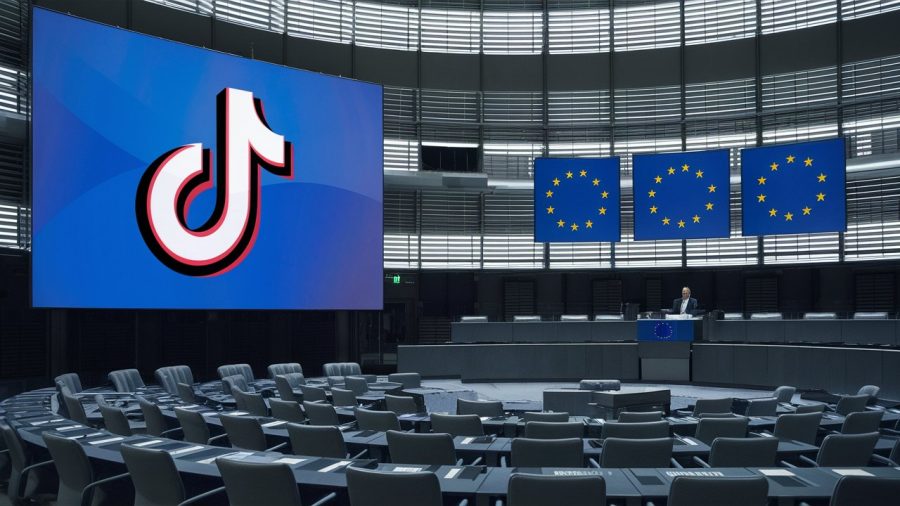The recent turbulence of Coronavirus made all of us rethink business life. Many industries have started incorporating profound transformation to overcome the recession. The metamorphosis includes day-to-day operations to the business processes of vital importance. Businesses have even started closing new deals with clients at online meetings. Companies have been forced to turn all of these lockdown challenges into a complex change.
EVEN DURING LOCKDOWN — SUCCESS
All industries are now interrelated. Small businesses, medium-sized ventures, and international enterprises in different niches are actively rethinking operateions and how to address customer needs during the Coronavirus recession.
Companies exchange business survival tips and digital transformation practices across all the industries not to let their businesses fade away during this period but to give them a boost to innovate and enter the new digital economy.
How has the business world evolved throughout the Coronavirus challenges?
Every industry has experienced the change in its own particular way, and we are all watching the global process under the magnifying glass.
Digital Transformation in Banking

The Coronavirus has exposed banking to many challenges of digital transformation. Banks all over the globe have started incorporating digital banking and motivating their customers to switch all of their operations to the online mode.
While mobile banking has been just a competitive advantage for commercial banks before, it has become the ultimate survival requirement today.
In the context of COVID-19, banks try to keep their customers safe, educating them on how to make contactless payments, use remote channels, and leverage digital tools to manage their finances and complete transactions.
Even though mobile banking apps, web portals, and budget tracking tools might seem to be common to many customers in the modern world, a significant part of them has remained unfamiliar with them.
So, in the new normal, banks have become counterparts performing the role of digital educators for their customers and raising the overall tech literacy and acceptance of the digital economy.
“If global leadership is able to rise to the occasion, then this pandemic offers a great opportunity to digitally transform our societies and economies. After all, how many physical meetings do you really need when digital connectivity is accessible and reliable?” – Dr. Wei Kiong Tan, CEO of TechTIQ Solutions, an IT and digital consulting company.
On the other hand, banks try to give their customers psychological relief by promoting full transparency and clarity in financial processes. They also play a significant role in easing distress by offering loyalty programs, extending credits, and providing more personalized recommendations via virtual assistants.
Addressing New Customer Needs in the Food and Beverage Industry

The lockdown has created extreme conditions for the food and beverage industry. Food brands have met many challenges related to closed production utilities, reduced labor forces, and fewer product sales in the markets across the globe.
Businesses have also faced a drastic change of customer needs from health-conscious shopping to a stay-at-home and preparation mindset.
The essential requirements for food brands and restaurants have changed along with customer eating habits and the rising demand for delivery services.
All these factors have dictated the new market rules for food and beverage companies. To stay competitive, they have had to build a robust online presence; that’s why we have witnessed the decreasing demand for website development. But the mobile app development services have exploded, as more people are using apps under quarantine.
Food ordering and delivery apps have become particularly popular today.
In response to COVID-19, food brands have started providing new services and offerings for customers, including free delivery, discounts, sales, and even online cooking workshops.
Many brands have also rethought their marketing by switching it from offline to an online mode, humanizing their messaging by adding more empathy and cheering customers up with the fun content on social media.
Building Resilience in Healthcare

COVID-19 has become one of the most powerful accelerators of digital transformation in different industries. Healthcare is not an exception.
Due to the long queues of people who think they may have the COVID-19, healthcare facilities have started accepting digital innovations to automate plenty of processes and move part of the patient care into an online mode.
Telehealth has become the first step to healthcare digitalization.
It is the answer for most of the doctors’ concerns about remote patient monitoring, instructing patients on how to conduct self-assessment, screening patients with symptoms of the Coronavirus, managing patients’ data, and staying in touch with other hospitals.
We can also notice the increasing demand for branded healthcare apps, medical online platforms, cloud-based patient data management systems, ERPs, and innovative online tools for more automated healthcare services.
Digital transformation has knocked on the doors of many hospitals to help them to cope with huge volumes of data, manage patient queues, provide full patient engagement, and educate them on how to conduct self-service.
The challenging times make us accelerate digital transformation to overcome today’s challenges. However, they also help us build a better healthcare future for everyone’s benefit.
Navigating the Impact on Retail

Retail has been significantly affected by the Coronavirus situation too. According to Digital Commerce 360, 36% of retailers said they adjusted their marketplace strategy as a result of COVID-19.
Nearly a quarter of sellers, altered advertising, customer acquisition and marketing strategies since the COVID-19 crisis began
Although many retail brands have already had their own eCommerce versions, many of them have been forced to adjust to the lockdown and create their online presence for the first time.
A website has become an obligatory part of a businesses presence in the new normal.
A functioning website has become the medium between the brand and its customers, letting them keep the sales running and allowing them to engage customers, gain their loyalty, and keep them informed about the latest updates.
Understanding your target audience has been crucial before and it is becoming even more critical in current conditions.
A website allows the brand to collect data and learn more about their customers, while it also allows customers to learn more about the brand and interact with it at a more personal level.
Learning and understanding intelligent website analytics tools have become even more popular. Analytics allow analyzing the traffic sources, the web visitor’s online behavior, interests, preferences, and getting even more incredible insights about a target audience.
Analytical information gives retail brands a competitive advantage letting them set better-targeted digital advertising, adjust marketing messages, and deliver the desired customer experiences.
We can also see the increasing popularity of m-Commerce apps.
Today, customers become even more “mobile” and can manage even the most important issues on the go, directly from their mobile phones.
The growing interest in m-Commerce applications hasn’t been surprising, especially during the lockdown.
Retail brands have started investing in e-Commerce mobile app development to be combat-ready for the upcoming recession and new needs of tech-savvy customers who spend almost all their time online in the current conditions.
Rapid Response in Aerospace and Defense

While the aerospace and defense industry has seemed to be entirely embraced by the digital transformation, there still are areas that need even a closer touch of digital innovations to deliver safe and more convenient customer experience.
According to Accenture, 84% of aerospace and defense executives agree that technology has become an inextricable part of the human experience.
Aerospace and defense companies have already been providing immersive and co-created experiences to improve aircraft design and increase the satisfaction of the flight experience.
However, forward-thinking businesses should work even more closely with their customers to create technology-driven experiences of the future. They will let customers participate in the aircraft design process, prioritizing comfort, hygiene, safety, and passenger experience.
Robotics’ potential is transformative for the industry.
Manufacturing automation, reducing hardware costs, and the upcoming 5G expand the possibilities of robotics, improving how aerospace and defense enterprises design, manufacture, and roll-out their products and services.
Closing Thoughts
These are the five key sectors and how they have changed during the lockdown. The post-Coronavirus world is now experiencing a complex change affecting all the industries and verticals.
From the daily operations to large-scale processes, the business world has already transformed a lot, and it is still evolving today.
Although the COVID-19 challenge has shaken the whole world and exposed everyone to danger and stress — it also has given us a tough boost to innovate and move into the future faster than we’ve been doing it before.
Industries that have seemed to be able to live without digital disruptions have faced them today as the ultimate requirements for business survival. It motivated them to join the global process of entering the new digital economy.
Top Image Credit: robert bye; unsplash











